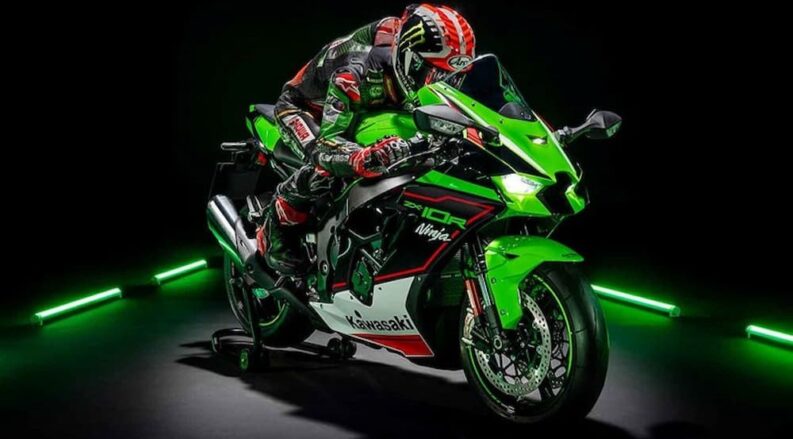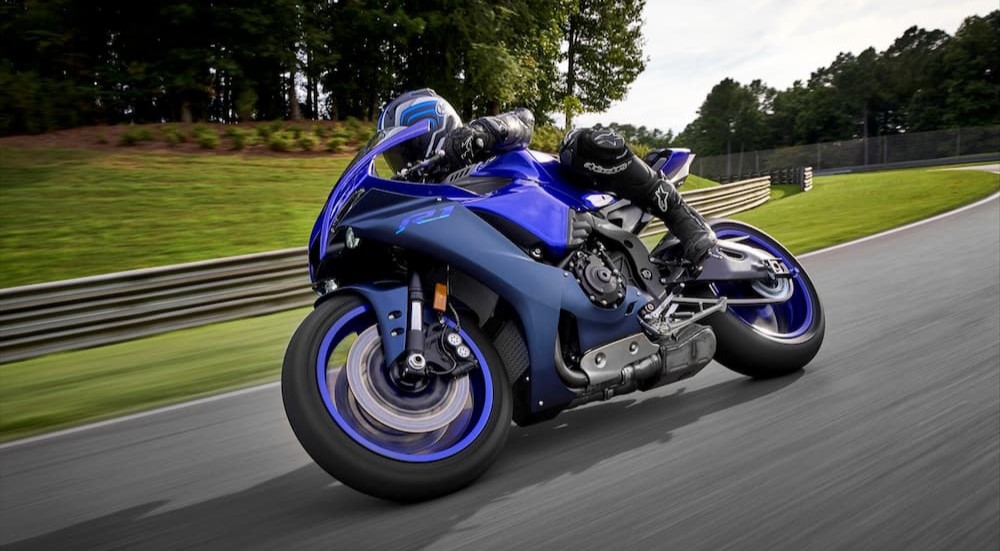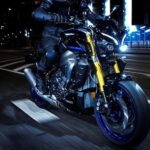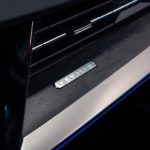Motorcycle enthusiasts like me undoubtedly remember the Japanese liter bike “horsepower wars” waged from the 1990s to the late 2000s. Although the superbike era unofficially began in the early 1970s with the Honda CB750 and Kawasaki Z1 900, it shifted into high gear (pardon the pun) surrounding the turn of the century. The economy was booming, and so was people’s lust for pure sport bike power, highlighted by a slew of high-tech, one-liter engines once considered a pipe dream.
The 2008 economic recession caused the breakneck pace to slow to a crawl, but things are starting to pick back up with the release of bikes like the Yamaha YZF-R9 and Kawasaki Ninja 1000SX. Most notable for me, though, is that motorcycles from the original 1990s and 2000s wave of Japanese liter bikes are not only surviving but thriving. How do these motorcycles for sale remain relevant as the overall sport bike and superbike market fall back, and what’s next in their evolution? Today, I’m looking at a one-liter bike from each of the major Japanese motorcycle brands that has stood the test of time and remained at the top of the class.
Honda CBR1000RR
The legendary CBR series was born in 1992 with the CBR900RR. When the seventh generation came out in 2004, it officially entered the liter bike club. This model left the CBR900RR behind with a slew of new parts beyond the power plant. Components like the long swingarm, front suspension, and two-stage fuel injection were swiped from the Honda CBR600RR. Honda also added a cassette-style six-speed transmission, aluminum frame, inverted fork, radial front brakes, and other track-inspired elements.
Since then, Honda has continued building on the motorcycle known in some markets as the Fireblade (a name I wish it had in North America). Throughout the supersport boom period, Honda released a new generation of the CBR1000RR every year or two. The 2009 edition was the first supersport bike to have electronically controlled dual ABS. Other editions introduced features like back torque limiters and valveless damping pistons. This was part of Honda’s stated goal for people to experience the highest “joy of riding” rather than maximizing sheer power despite the liter bike classification.
Perhaps this is part of why the CBR1000RR has remained Honda’s flagship sports bike. It’s still plenty fast, though, fast enough for James Toseland to win the 2007 Superbike World Championship. Beginning with the 2017 Fireblade 25th-anniversary edition, Honda emphasized the electronic controls for a seamless rider experience The 2020 redesign included the new CBR1000R-RR SP using an engine developed based on the RC213V seen in MotoGP which makes 214 hp in Europe and 186 hp in the U.S. (darn horsepower caps). With sales remaining strong, there’s no end in sight.
Kawasaki Ninja ZX-10R
The same year the CBR1000RR came out, Kawasaki introduced another liter bike that would become a generational contender. After 10 years of making the Ninja ZX-9R, Kawasaki bumped it up to the liter-class with the Ninja ZX-10R. Its 16-valve, four-stroke engine slapped out 175 hp with one-piece cylinders to increase strength with a lighter weight. It also had an oil cooler, wet slipper clutch, and wheels that rivaled those used by professional racers. The Ninja ZX-10R even came with a back-torque limiter years before its Honda rival.
This bike smoked the competition and impressed the critics right out of the starting blocks, winning the Cycle World Best Superbike award back-to-back in 2004 and 2005. It’s been updated almost annually from there. In the 2010s, the ZX-10R and its subsequent racing-focused sibling, the ZX-10RR, became the bikes to beat in the Superbike World Championship. Tom Sike won the 2013 WSBK title, followed by Jonathan Rea, taking three straight from 2015 to 2017. Kawasaki was so dominant that in 2018, SBK introduced engine rev limit rules that appeared to be aimed at bringing the Ninja ZX-10RR back to the pack. Kawasaki responded with the “Ninja Spirit” branding of never giving in, and they didn’t, with Rea extending his streak to six straight SBK championships.
Kawasaki continues to charge forward with the skill and stealth you’d expect from a Ninja. Although it’s not the most muscular bike in the Kawasaki lineup, that being the Kawasaki Ninja ZX-14R, the modern Ninja ZX-10R is plenty for most riders. It makes more than 200 hp and has been named among the most race-ready superbikes an everyday rider can purchase.
Suzuki GSX-R1000
Despite the longevity of the previous two bikes, two others supersede them. Suzuki welcomed the 21st century with the 2001 GSX-R1000. Interestingly, the bike was downgraded in engine size from its predecessor, the GSX-R1100, made from 1986 to 1998. It was no secret that the R1100 had fallen behind by the end of its run, and Suzuki rectified this with a more powerful and agile version of the popular GSX-750. Making 160 hp with a dry weight of less than 400 lbs, it could hit 173 mph and go from 0-60 mph in less than three seconds.
Suzuki released new editions of the GSX-R1000 in 2003, 2005, and 2007, continuing to fine-tune the power and handling. In something that has become a theme, the bike was a winner on the track as well as the street, winning the 2005 Superbike World Championship with Troy Corser at the controls. Like other bikes in the liter-class, the pace of updates slowed, with the last mechanical overhaul coming in 2017. This led to speculation that Suzuki was standing pat on the GSX-R1000R or could even start phasing it out. However, Cycle World reports the bike is set for a big update to mark the 25th anniversary, showing the manufacturer remains committed to its success.
When the revision comes out, it will build on a bike that’s still plenty impressive, making 199 hp in the most recent iteration with advanced features like variable valve timing, IMU traction control, and all-LED lighting. Suzuki has also cranked things up with the GSX-R1000R and GSX-R1000RZ for riders who want even more from their superbikes.
Yamaha R1
Known in full as the Yamaha YZF-R1, this is the oldest bike on the list, first seeing the roads in 1998. Yamaha was already in the liter bike race with models like the Yamaha FZR1000 and YZF1000R Thunderace, but the YZF-R1 represented the pinnacle of its work. The original R1 was powered by a compact 149-hp version of the Genesis high-performance engine, which allowed a longer swingarm, shorter wheelbase, and lower center of gravity. It could go 0-60 in less than three seconds three years before the GSX-R1000, and the Power Valve exhaust system produced more consistent torque throughout the rev range.
More than a quarter century later, the Yamaha YZF-R1 remains a centerpiece of the Yamaha lineup, having undergone nine major overhauls, the most recent being in 2020. As with other Japanese bike makers, there have been fewer updates since the liter bike heyday, but this added time between generations has meant quality over quality. The seventh-generation 2009 YZF-R1 is the bike Ben Spies wheeled to Yamaha’s first Superbike World Championship. The eighth generation from 2015 won several international honors, including the coveted Red Dot Award for Product Design. In 2021, Toprak Razgatlıoğlu finally broke Kawasaki’s grip on the SBK throne on a tenth-generation Yamaha YZF-R1.
Today, the YZF-R1 is as strong as ever with a 199-hp engine (162.4 of which makes it to the rear wheel), OEM magnesium wheels, and some of the most advanced electronics around, like the first-ever production Slide Control System. Furthermore, the R1 has spawned the larger R-series with motorcycles like the YZF-R6, R3, R125, and R7 offering a superbike experience using different power plants.
The Japanese Liter Bike Lives
The sport bike and superbike market may not collectively be the dominant force they once were, but the staying power of these Japanese manufacturers and bike models is undeniable. Even the models that haven’t gotten an official new generation in a while still receive annual updates from the suspension to the fairing to keep them atop the mountain. With championship pedigrees and hard-earned reputations among enthusiasts, the Honda CB1000RR, Kawasaki Ninja ZX-10R, Suzuki GSX-R1000, and Yamaha YZF-R1 seem ready to continue motoring into the future.





